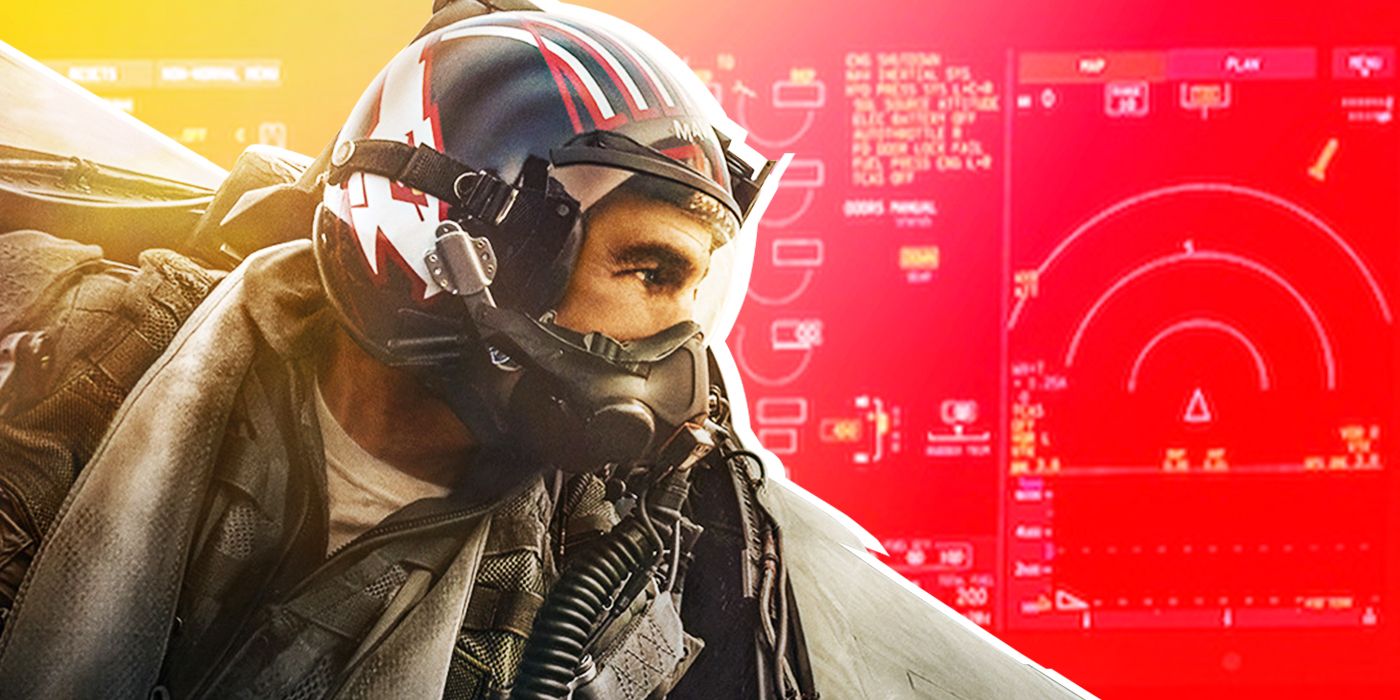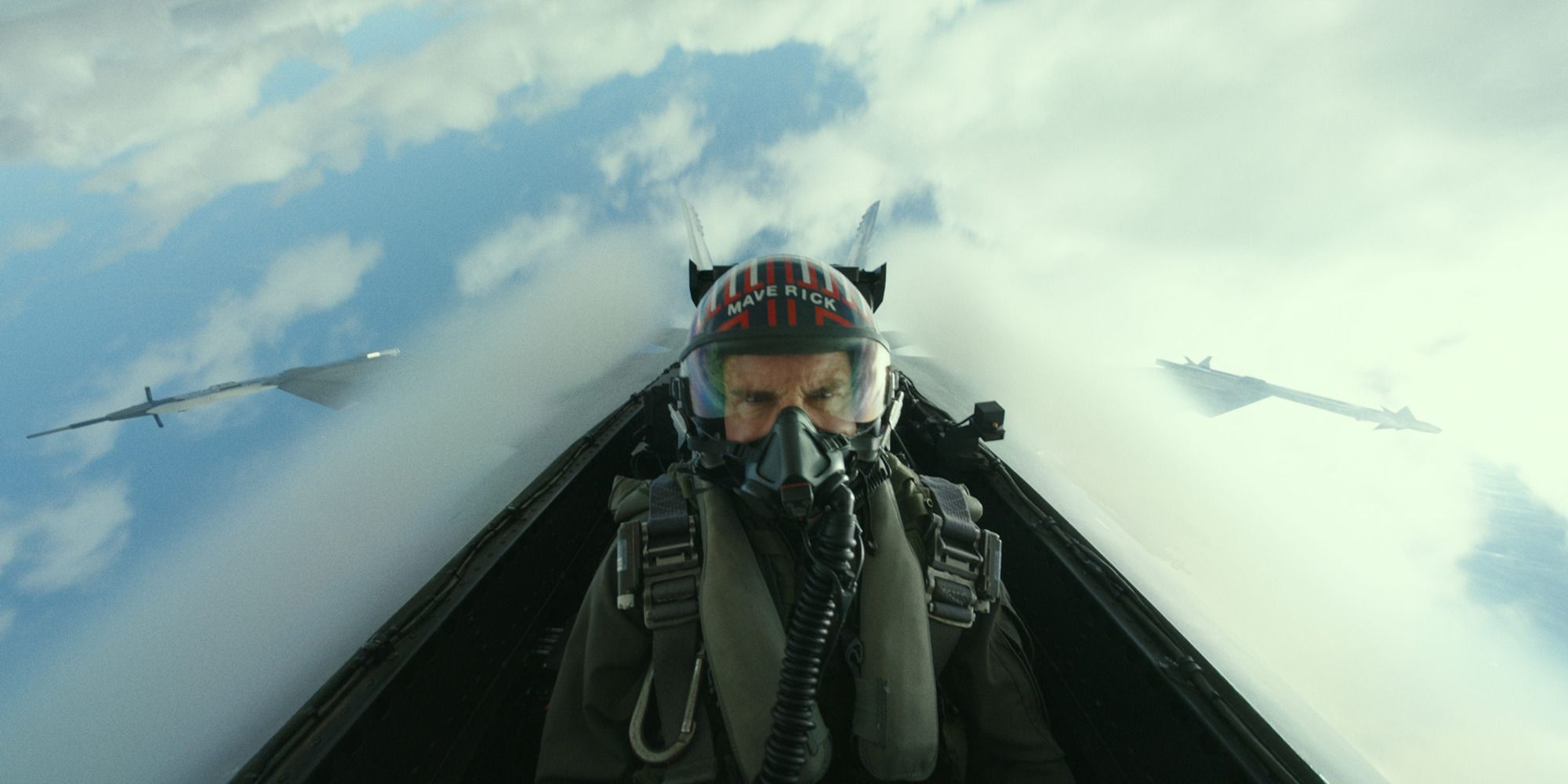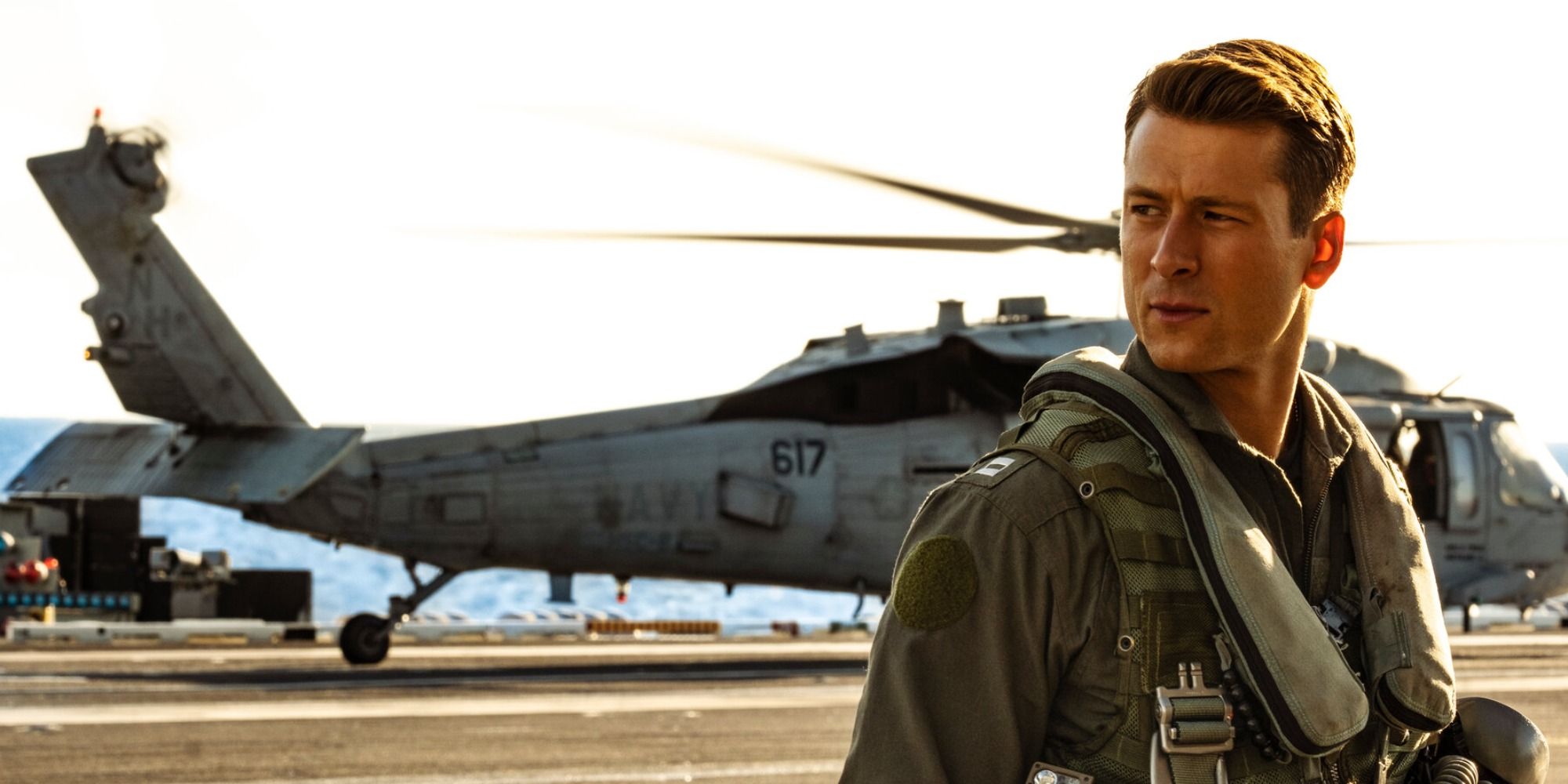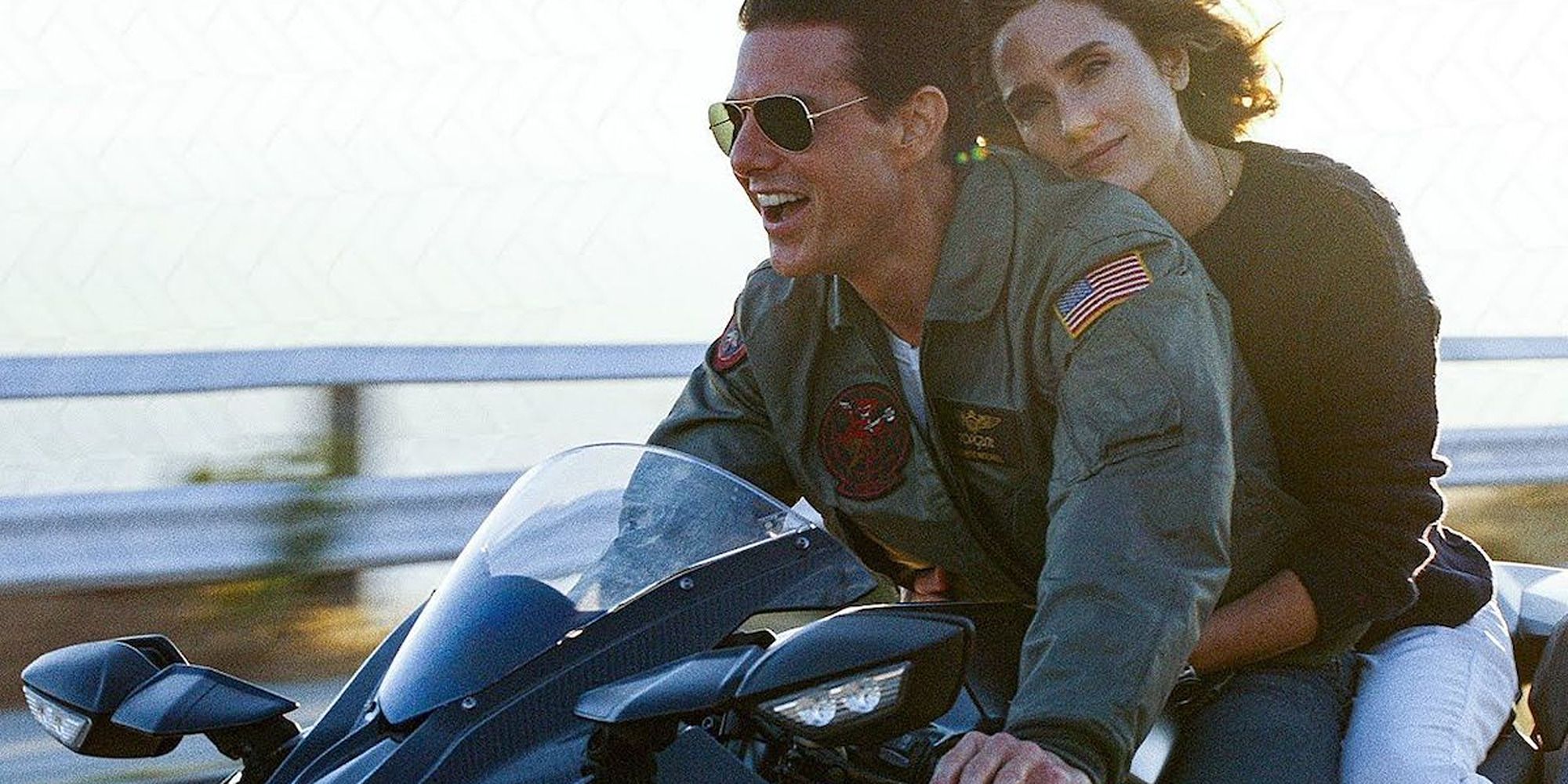At the beginning of Top Gun: Maverick, the years-in-the-waiting sequel to 1986’s Top Gun, we see Captain Pete “Maverick” Mitchell (Tom Cruise) doing exactly what we might expect him to be doing, even 30 years later.
In a moment of audacious courage (and unflappable hubris), he decides to test if the U.S. military’s latest fighter jet can be successfully flown past Mach 10, against the orders of his superior, Rear Admiral Cain (Ed Harris). If Admiral Cain had his way, a fellow serviceman says, the budget for this cutting-edge jet would be redirected to the program developing unmanned war weaponry. Despite Maverick’s technical success, he comes crashing back down to earth to receive a scolding from Cain, who tells him that soon, there won’t be a need for pilots.
Cain tells Maverick that his skill set and beliefs are obsolete (“Your kind is heading for extinction,” he graciously says). In stating this as fact, the admiral poses a question not only to Maverick, but to the audience: What need has the world for humans when AI can get the job — any job — done? Are reckless humans of any use when AI entrenches itself in our daily lives, in a world where drone warfare and unmanned war games are played with greater and greater frequency, and where technology has become inseparable from its creators?
Thus, in these first moments as we are reunited with Tom Cruise’s daring character, Top Gun: Maverick establishes a daunting ambition: tackling our tech age.
And it couldn’t have come at a more appropriate time. News broke June 1 that Russia has claimed to complete tests of hypersonic missile launches (which are essentially high-tech missiles that can move 1 to 5 miles per second). Not that Russia is the only perpetrator: closing one’s eyes and pointing at a map, you could produce numerous such examples of the advancements, and tragic shortcomings, of countries in our real world utilizing faceless methods of destruction. Top Gun: Maverick doesn’t shy away from this reality.
When the world-class aviators are first assembled, they are informed that the ever-anonymous “enemy” will present a series of technological hoops for the Top Gun team to jump through in order to even consider success: superior missile machinery and a dogfight with newer, better planes, to name a few. Maverick’s first instinct is, unexpectedly, realistic fear. “Someone’s not coming back from this,” he says.
But as his bonds with his disciples strengthen, with confidence and poise we are explicitly told the answer to this robotic debacle: “It’s not the plane, it’s the pilot.”
This declaration reverberates throughout the film, as Maverick and the late Goose’s son, Rooster (Miles Teller) reckon with their guilt and fears, and eventually team up. All the while, we are led to fully believe the film’s mantra is airtight. Our heroes stave off enemy advances in lesser planes, attack precise targets through sheer concentration, and demonstrate that superior technology needn’t necessarily render them helpless. That is, until we come to the mutual sacrifice between Rooster and Maverick, and the subsequent stolen ’80s-era plane situation. In the retro bird, Maverick and Rooster’s team efforts do impressively lead them past missiles and across the waters almost to the horizon of victory — but it isn’t enough. An enemy plane slips past their detection, and the aged mechanics of the ’80s jet restrict Rooster from ejecting. In this moment, Top Gun: Maverick concedes that superior technology is a factor in success. But it doesn’t let us lament this fact for too long.
Enter Hangman (Glen Powell).
In a full-circle moment, orders are defied. Hangman leaves the aircraft carrier despite receiving instructions that he shouldn’t (at least it’s implied that he defied his initial orders), and saves our heroes from certain destruction. It’s this uncalculated, unexpected human choice that secures victory, one that a machine alone cannot execute with a simple number-crunch. And this unselfish choice from a selfish character is the death blow in Top Gun: Maverick’s assault on the tech age, celebrating courage and critical thinking over rigor and robotics.
There are subtler indications at this partiality for all things human throughout the film. Early on, Rooster unplugs the jukebox and sits at the piano, engaging the whole crowd in some good old-fashioned analog fun. And even the way the movie was filmed speaks to this message: foregoing what could have easily been a CGI-dominated flick in favor of real, heart-pounding plane action.
What makes Top Gun: Maverick’s argument all the more compelling is that not every frame is filled with the echoed screams of luddites and delusional individualists. Technology does act as a connection between Maverick and Iceman (Val Kilmer), providing a very relatable instance of the human face of tech. It also serves as an asset to the Top Gun team as they map the canyon that they eventually must serpentine through. But the film banishes technology to the sidelines, and is the better for it.
Looking at the film’s central tech thesis begs another, tougher question for the audience. What relevance does a movie star such as Tom Cruise have in our tech-driven 2022 world? The unlimited accessibility of streaming technology has lessened the impact of would-be movie theater blockbusters. Meanwhile, a pandemic pushed back the movie release date by almost three years. Top Gun: Maverick braved this territory by asking, up front, if even its star was obsolete.
And yet again, Top Gun: Maverick answers with a resounding no.
The film shattered box office records in a time when most movies still blame pandemic-era attendance on poor performance, while simultaneously receiving praise from fans and critics alike. So despite our devotion to our phones and the tech that now facilitates our lives, the film suggests that there is still a prominent place for blockbuster films and bombastic movie stars.
Top Gun: Maverick, of course, is a work of fiction, and in a way, of fantasy. Perhaps it’s consoling to watch an aging biggest-in-the-world superstar play the renegade, and to witness a country that has made so many missteps rise above itself by sheer power of will, rather than by the advancements of robots and the decisions of the elite hundreds of miles away.
But then that’s the beauty of Top Gun: Maverick. Whether it’s the film’s leading man or the highly topical tech issues it addresses, it makes fantasy feel like the real deal.
























































![Key Metrics for Social Media Marketing [Infographic] Key Metrics for Social Media Marketing [Infographic]](https://www.socialmediatoday.com/imgproxy/nP1lliSbrTbUmhFV6RdAz9qJZFvsstq3IG6orLUMMls/g:ce/rs:fit:770:435/bG9jYWw6Ly8vZGl2ZWltYWdlL3NvY2lhbF9tZWRpYV9yb2lfaW5vZ3JhcGhpYzIucG5n.webp)




.jpg)
















![LinkedIn Ads Checklist: 19 Steps to a Successful Campaign [Infographic] LinkedIn Ads Checklist: 19 Steps to a Successful Campaign [Infographic]](https://www.socialmediatoday.com/imgproxy/qNwPn6iIAju1WiJ-527OnA0k0pwy_1g04GQ-lWaEhe4/g:ce/rs:fill:770:364:0/bG9jYWw6Ly8vZGl2ZWltYWdlL2xpbmtlZGluX2Fkc19jaGVja2xpc3QyLnBuZw.png)